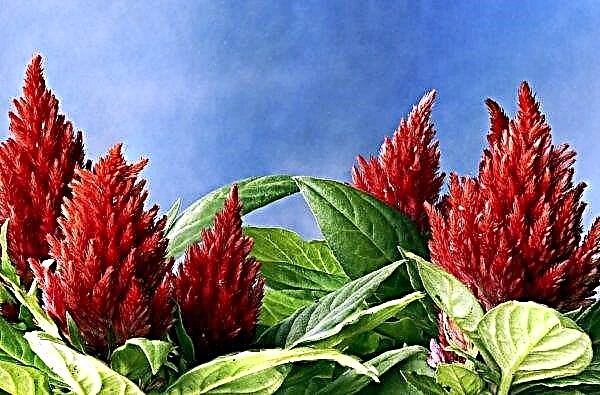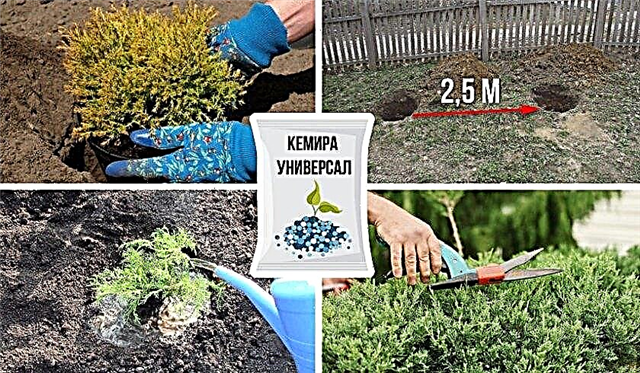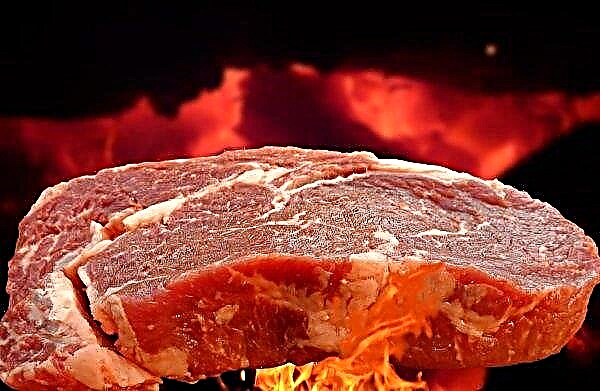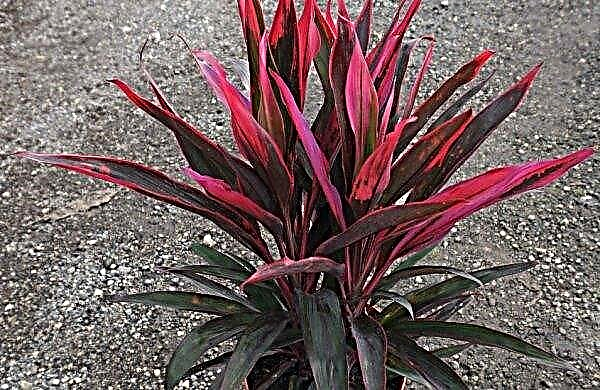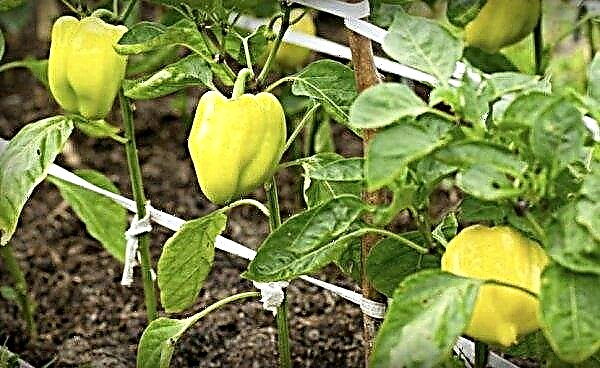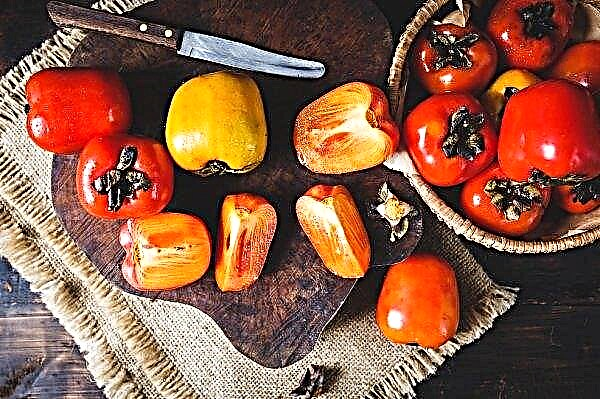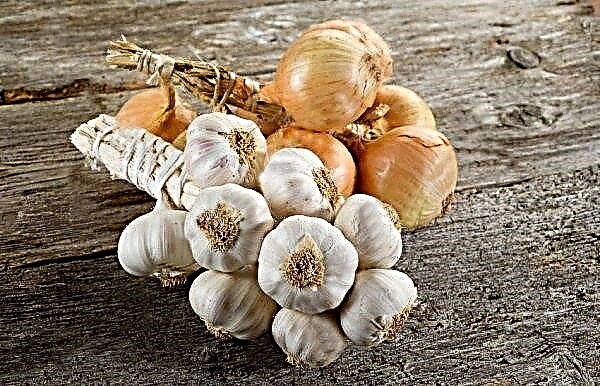Those who grow corn on their plot know that this crop has many varieties. Among them, Krasnodar corn varieties are well established. To get a good harvest, it is recommended that you familiarize yourself with the description of variety hybrids, the nuances of growing, harvesting and storing the crop.
Grade description
Corn varieties Krasnodar breeders are classified as mid-season hybrids. The stalk reaches a height of 180 cm. The total growing season is from 90 to 100 days. The plant consists of cobs 17–20 cm long. A ripe yellow grain, flattened.
Chemical composition and calorie content
On the cobs of sweet corn contains 101 kcal per 100 g. By its biochemical properties, it is a valuable and useful product.
Corn grains contain:
- fats - about 6%;
- proteins - from 8 to 12%;
- starch - 60–68%.
Did you know? Each ear is characterized by the fact that it always has an even number of grain rows. It varies depending on the variety and is 8–22 rows.
This culture contains a huge range of vitamins: C, group B, PP. Its composition includes minerals such as potassium, iron, copper, calcium, magnesium, as well as mono- and disaccharides.
Variety hybrids
When choosing a particular hybrid of corn, you must remember that each variety is suitable for a specific climatic zone and cultivation technology. Compliance with all conditions of agricultural technology will achieve maximum plant performance.
Krasnodar-291
This variety of agronomists is classified as a medium early ripening type hybrids. The growing season is from 106 to 110 days. The plant has a high adaptation to local growing conditions and good productivity. It tolerates drought and is resistant to many diseases.
The plant has a high adaptation to local growing conditions and good productivity. It tolerates drought and is resistant to many diseases.
This variety is a good precursor for winter cereal crops, as it has low harvesting humidity. From 1 ha you can collect 125 kg of grain. The ear of vegetable is similar to a cylinder and consists of 14 rows. The mass of 1000 grains leaves from 280 to 300 g. The plant reaches a height of 180-200 cm.
Did you know? Abas Matiev, a resident of the village of Surkhakhi in Ingushetia, raised the highest corn. The plant reached a height of 418.5 cm.
Krasnodar-377
A modified variety related to mid-season hybrids. Growing time is about 114 days. The plant reaches a height of 260–270 cm. Grains in head of cabbage are tooth-shaped, yellow. The total weight of 1000 grains varies from 370 to 372 g. The ear of the plant has a slightly pronounced conical shape. The features of this variety include its resistance to drought, as well as the fact that it lends itself well to mechanical cleaning.
Krasnodar-385
The variety belongs to the double interlinear mid-season hybrids. It tolerates dry weather and is resistant to many diseases. The growing season is 114–116 days. The plant reaches a height of 250-260 cm.
Young heads of cabbage are laid at a height of 95 to 100 cm. The grains have a tooth-like shape and a yellowish tint. The total weight of 1000 grains leaves from 300 to 310 g. The variety can be used in the production of both grain and silage.

Advantages of Corn Krasnodar
This variety has the optimal content of sugars (4.5%), proteins (5.5%) and solids (up to 38%). The plant is resistant to many types of stem rot. Heads of cabbage are mostly large and highly transportable. They can be stored without losing their properties for a long period.
Growing corn
The cultivation of sugar corn will not bring much trouble if the necessary sowing dates, proper care of the crop, as well as timely harvesting are met. We describe all these processes in more detail.
Landing
It is necessary to prepare for sowing in the autumn period. Close attention should be paid to weeding weeds and loosening the soil. Corn seeds should be applied according to the scheme 60 × 30 cm, in a well-heated soil, in the last days of April or in the first decade of May. In the prepared hole, 3-4 grains are placed at a depth of 3-6 cm. When the shoots appear, 1–2 strongest leaves are left, the rest are removed.
Important! When planting, special attention should be paid to the quality of the seeds. All planting material should have the same shape and color.
Cob Care
The culture is undemanding to moisture. But you need to remember that during the period of active growth it must be irrigated. This procedure should be carried out after hilling of landings.
Abundant watering should be carried out before the panicle formation stage. This ensures the formation of juicy and tasty fruits. During this period, which falls in August, it is necessary to stop watering.
How to understand that the corn has ripened
The following factors influence plant ripening:
- growing season of the cultivated variety;
- planting time;
- climatic and weather conditions of cultivation.
If you plan to use corn for making popcorn or for seeds, then you need to harvest during the biological maturity of the fruit. Dairy fruits are best used in cooking.
Ripe ears can be easily separated from the plant, as mature heads of cabbage deviate from the stem under the influence of their gravity.
Important! The shelf life of dairy corn is not more than 20 days, provided that it is kept in a cool place at a temperature of 0 ° C. When the temperature rises to + 10 ° C and higher, the milk cobs begin to lose sugar.
Harvesting and storage
The main indicator of corn readiness for harvest is brown stigmas on the cob. Harvesting is better in the morning or evening hours.
The most optimal ways to store young ears are canning and freezing, which will not lead to loss of nutrients, but it will make it possible to consume the product throughout the winter. The degree of cob maturity directly affects how much time they cook during canning. Milk corn will be cooked in 20-30 minutes, and ripened - not earlier than in 30-40 minutes.
Growing corn on his plot, each gardener would like to get a good harvest. To do this, you must adhere to certain rules for its cultivation, as well as comply with the timing of planting and collecting ears.

